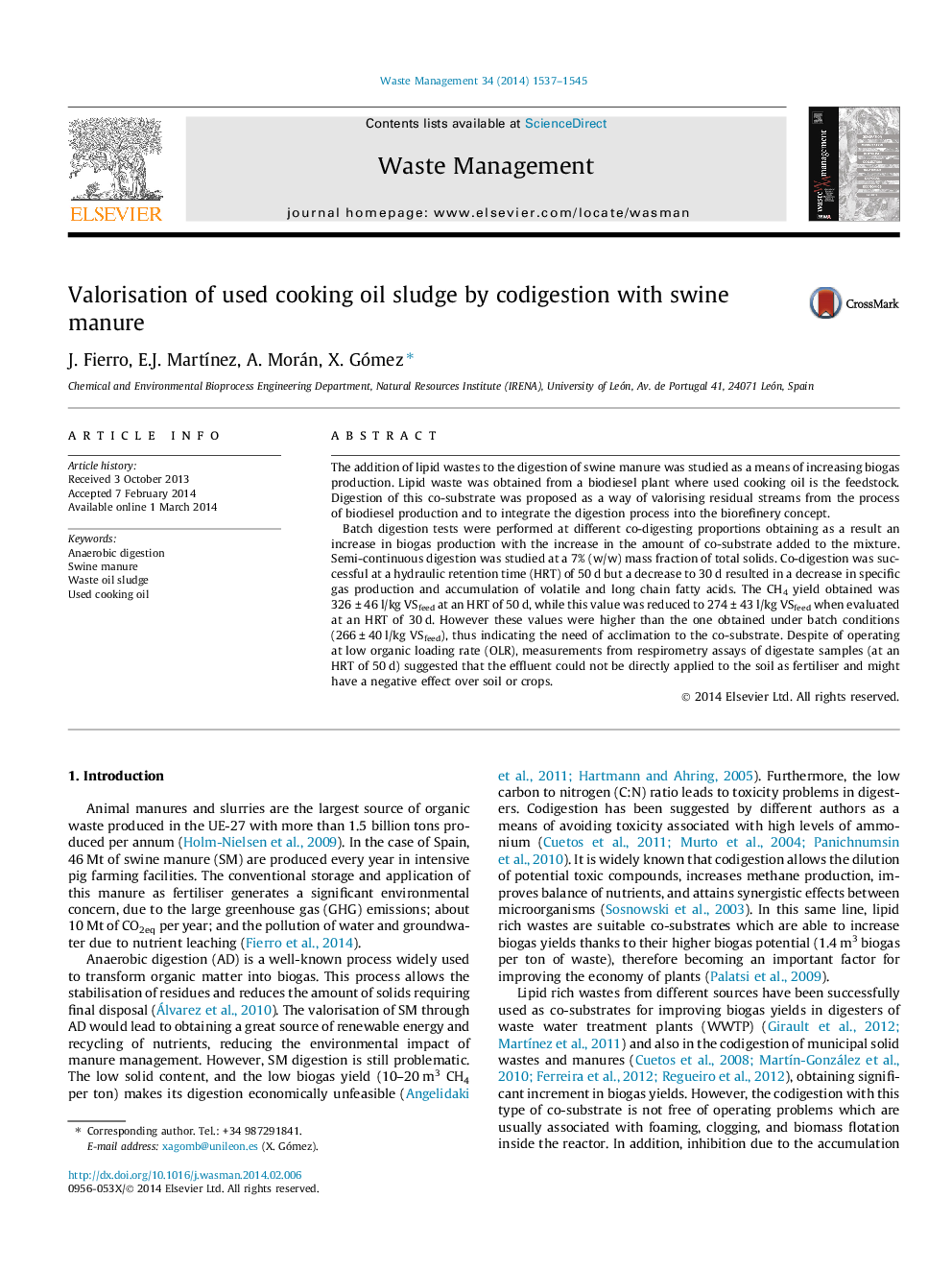| کد مقاله | کد نشریه | سال انتشار | مقاله انگلیسی | نسخه تمام متن |
|---|---|---|---|---|
| 4471506 | 1315030 | 2014 | 9 صفحه PDF | دانلود رایگان |
• Anaerobic codigestion of UCO sludge and swine manure was successful at 50 d HRT.
• VFA build-up was present during the reactor start-up but were reduced after 50 d.
• CH4 yield was 326 l/kg VSfeed, decreasing HRT to 30 d resulted in poor performance.
• Digestate at 50 d HRT was unstable although the load applied to the reactor was low.
The addition of lipid wastes to the digestion of swine manure was studied as a means of increasing biogas production. Lipid waste was obtained from a biodiesel plant where used cooking oil is the feedstock. Digestion of this co-substrate was proposed as a way of valorising residual streams from the process of biodiesel production and to integrate the digestion process into the biorefinery concept.Batch digestion tests were performed at different co-digesting proportions obtaining as a result an increase in biogas production with the increase in the amount of co-substrate added to the mixture. Semi-continuous digestion was studied at a 7% (w/w) mass fraction of total solids. Co-digestion was successful at a hydraulic retention time (HRT) of 50 d but a decrease to 30 d resulted in a decrease in specific gas production and accumulation of volatile and long chain fatty acids. The CH4 yield obtained was 326 ± 46 l/kg VSfeed at an HRT of 50 d, while this value was reduced to 274 ± 43 l/kg VSfeed when evaluated at an HRT of 30 d. However these values were higher than the one obtained under batch conditions (266 ± 40 l/kg VSfeed), thus indicating the need of acclimation to the co-substrate. Despite of operating at low organic loading rate (OLR), measurements from respirometry assays of digestate samples (at an HRT of 50 d) suggested that the effluent could not be directly applied to the soil as fertiliser and might have a negative effect over soil or crops.
Journal: Waste Management - Volume 34, Issue 8, August 2014, Pages 1537–1545
